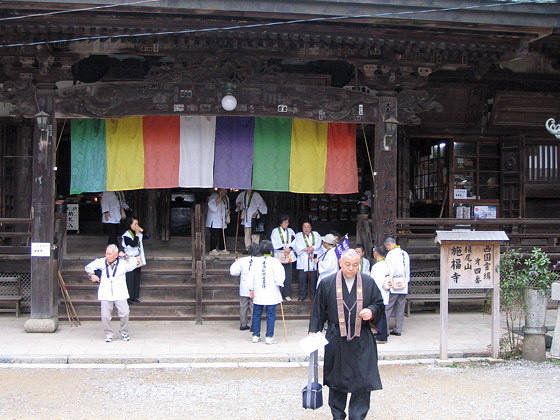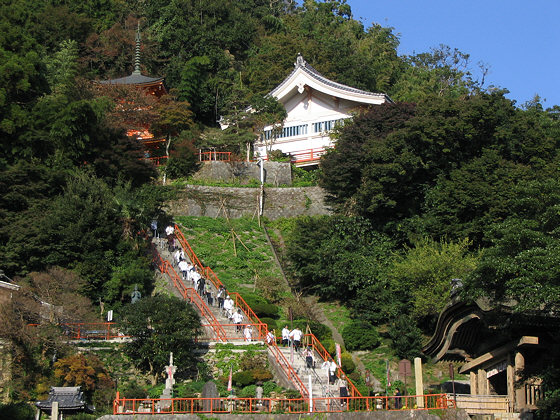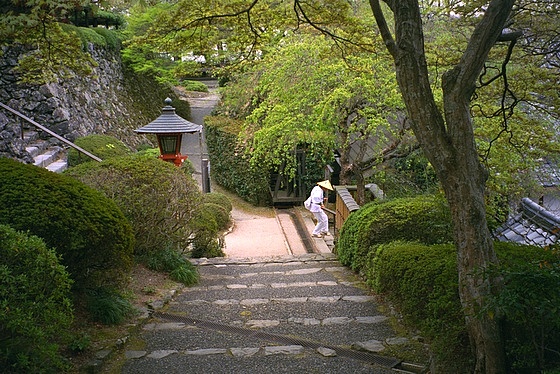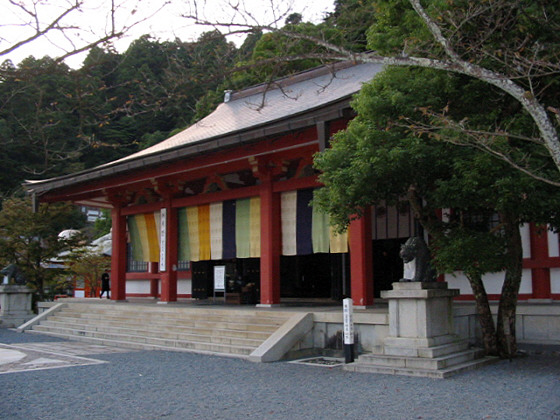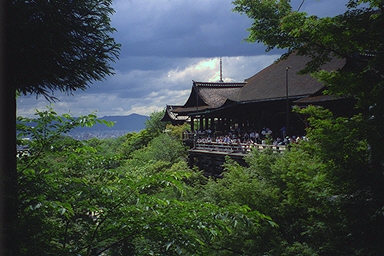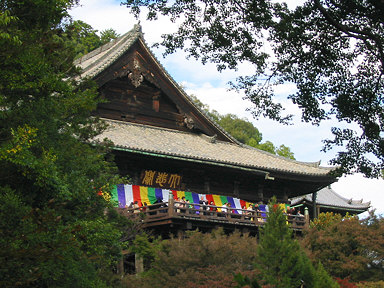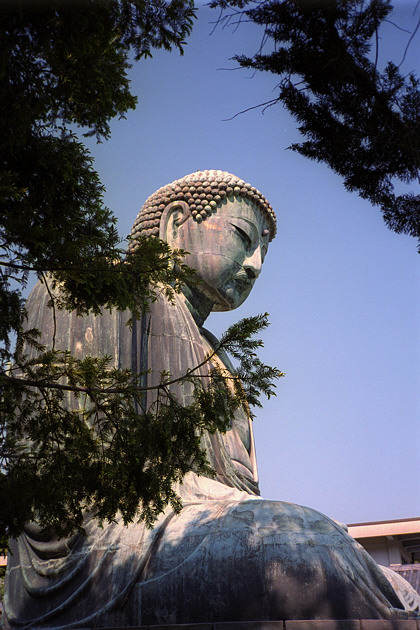Heian Era Pilgrimages
Pilgrimages to Buddhist temples, Shinto shrines and sacred mountains are still popular in Japan, particularly with those over 60 who have time on their hands.
Many of the temples on the Saigoku Kannon pilgrimage date from Heian times and still attract many pilgrims.
Kurama, in the Northern Hills, was a popular place of pilgrimage in Heian times, and Kurama-dera temple is mentioned in The Sarashina Diary (Sarashina Nikki).
One of the most well known pilgrimages was Kiyomizu-dera, which Genji passes on his way to Yugao's funeral at Mount Toribe. Another was Ishiyama-dera, a favourite of Murasaki Shikibu herself.
On the road to Ise, Hatsuse (Hase-dera) was probably the farthest pilgrimage for aristocrats of the Heian era.
After the Latter Days of the Law (mappo) began in 1052, Amidism became increasingly popular. The Daibutsu in the new capital became a popular pilgrimage in the Kamakura era.
Present-day pilgrims to Buddhist temples or Shinto shrines can buy a nokyocho (pilgrim's book) and have their visit recorded with an official stamp and a handwritten name and date.
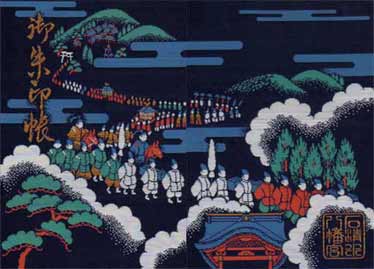
The front and back covers of a nokyocho depict a procession up to the Iwashimizu Hachiman shrine on Mount Otoko.
Mementos at shrines and temples include omamori (amulets) made from cloth and wood.
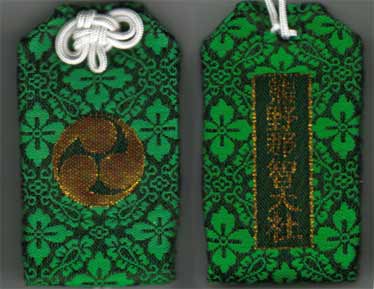
An omamori amulet from the Seiganto Shrine near Nachi Falls.
For a taste of the type of forest path used by early pilgrims, try the Takisaka-no-michi trail from Yagyu to Nara.
